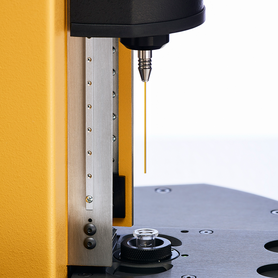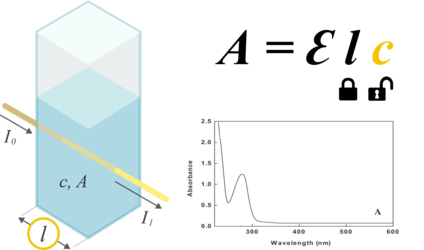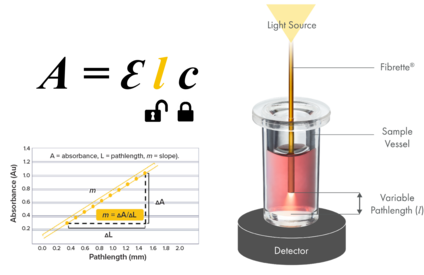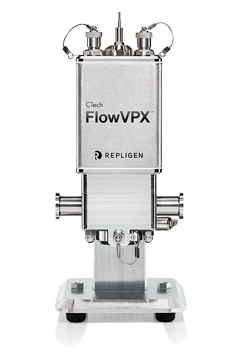What is Slope Spectroscopy®?
特許取得済みの、独自の可変パスレングス技術(VPT)
アットラインおよびインラインプロセスを分析するためのより効率的な方法であるSlope Spectroscopy®は、濃度を決定する変数としてパスレングスに注目した、ランベルト・ベールの法則に代わるUVベースの技術です。

How does Slope Spectroscopy® work?
Called Slope Spectroscopy® due to the slope this technique creates when there is a change in absorbance over a change in pathlength, this method leverages the power and flexibility of variable pathlength technology to create rapid and robust concentration measurements.
UV-based, this method analyzes samples at variable pathlengths using a precision linear stage to efficiently collect multiple absorbance data points to calculate a slope regression. Generating a slope value (absorbance over pathlength) allows you to quantify the concentration with higher accuracy, rather than relying on a single data point using absolute absorbance.
Unlike traditional spectroscopy — where the concentration is the variable — our method uses the pathlength as the variable, allowing the concentration to remain constant. When the concentration remains constant, you are able to eliminate dilution and decrease the chances of contamination and that creates a more reliable end result and product.
Traditional UV

Traditional spectroscopy uses concentration as the variable and a single data point using absolute absorbance
Slope Spectroscopy Method

The Slope Spectroscopy® technique uses pathlengths as the variable and collects multiple absorbance data points to calculate a slope regression
The Slope Spectroscopy® Difference
A different approach to UV-Vis
Decrease Errors
Traditional UV-Vis spectroscopy relies on a fixed pathlength at a single absorbance data point. By locking in the pathlength the user is forced to “unlock” or change the concentration to an acceptable level which leads to an error-prone process.
Increase Accuracy
Slope Spectroscopy® provides multiple absorbance data points from different pathlengths offering greater insight into sample and measurement results.
Save Time
The Slope Spectroscopy® method using our instruments and software can report concentration results in less than two minutes. The SoloVPE System works at-line, while the FlowVPX System works in-line. Our ViPER software automates your analysis, so you just focus on the sample preparation and the resulting report. The intuitive software detects change in absorbance, and auto adjusts pathlength accordingly.
|
Product Feature |
FlowVPX |
|---|---|
| Data Collection | In-line process monitoring |
| Inline UV-Measurement |
✓ |
| System Suitability Testing Capability |
✓ |
| Minimum 5-Second Cycle Acquisition Time |
✓ |
| CE System Certification |
✓ |
| ViPER™ Software Compatibility |
✓ |
| 21 CFR Part 11 & Annex 11 Compliance |
✓ |
| Analog I/O |
✓ |
| Automated Zeroing |
✓ |
| Smart Cell Operation |
✓ |
| Process Status Indicators |
✓ |
| C1D2 Rating |
✓ |
| IP Rating | IP65 |
| Concentration Range | 0.1–300 mg/mL |
| Flow Cell Size Compatibility | Increase scalability |
| Minimum Pathlength Step Size | 1 µm |
| Contact a Specialist |
